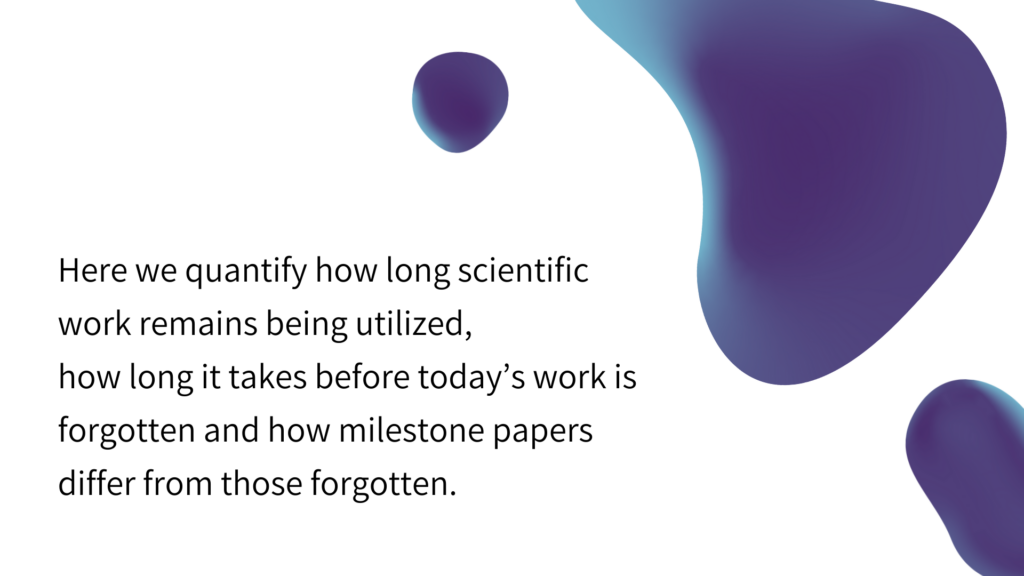For decades the number of scientific publications has been rapidly increasing, effectively out-dating knowledge at a tremendous rate. Only few scientific milestones remain relevant and continuously attract citations. Here we quantify how long scientific work remains being utilized, how long it takes before today’s work is forgotten, and how milestone papers differ from those forgotten. To answer these questions, we study the complete temporal citation network of all American Physical Society journals. We quantify the probability of attracting citations for individual publications based on age and the number of citations they have received in the past. We capture both aspects, the forgetting and the tendency to cite already popular works, in a microscopic generative model for the dynamics of scientific citation networks. We find that the probability of citing a specific paper declines with age as a power law with an exponent of α∼−1.4. Whenever a paper in its early years can be characterized by a scaling exponent above a critical value,αc, the paper is likely to become “ever-lasting”. We validate the model with out-of-sample predictions, with an accuracy of up to 90% (AUC∼0.9). The model also allows us to estimate an expected citation landscape of the future, predicting that 95% of papers cited in 2050 have yet to be published. The exponential growth of articles, combined with a power-law type of forgetting and papers receiving fewer and fewer citations on average, suggests a worrying tendency toward information overload and raises concerns about scientific publishing’s long-term sustainability.


